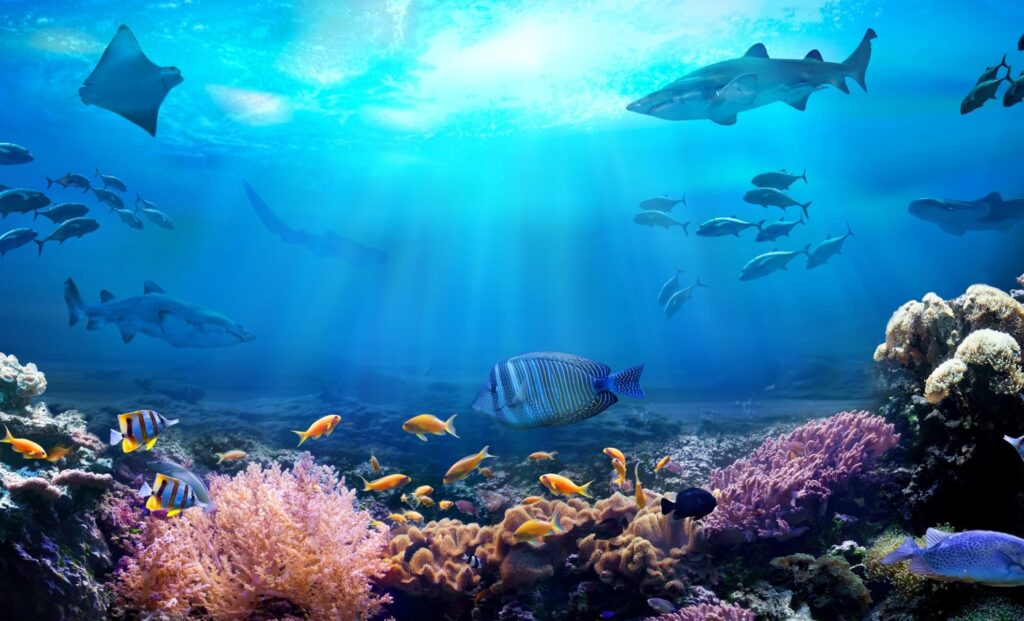This revelation comes from environmental DNA (eDNA) collected across global waters, from the polar seas to remote islands. It’s a game-changer for biodiversity records, revealing the hidden patterns of ocean life that have long been missed by traditional methods.
The research, led by Loïc Sanchez, has filled in the blanks of marine biodiversity maps, using the genetic traces that organisms leave behind in their environments. By analyzing eDNA in nearly 1,000 samples from different parts of the world, scientists have discovered that many fish species have been living outside their known ranges, challenging decades of data and expanding our understanding of marine ecosystems.
Understanding the Power of Environmental DNA
Environmental DNA, or eDNA, is a cutting-edge tool that allows scientists to detect species without capturing or visually spotting them. Organisms release genetic material into the environment through their skin, feces, or other biological waste, and this DNA can be extracted from water, soil, or air. In marine environments, eDNA samples can uncover the presence of species that might otherwise go undetected, especially those living in remote or difficult-to-study areas.
Loïc Sanchez and his team, from the University of Montpellier, used eDNA to examine biodiversity across a broad range of marine ecosystems, from the icy waters of the Arctic to tropical islands. According to Sanchez, their surveys revealed that the geographic ranges of 93% of species had been previously underestimated, with many extending far beyond the areas traditionally documented, reports Earth.com.
In some cases, just 10 eDNA samples were able to uncover as many as 24 new fish species, including those living in tropical regions that had not been sampled before. This breakthrough in research methodology offers a more precise and comprehensive understanding of marine biodiversity.

Expanding Our Knowledge of Species’ Geographic Ranges
One of the most notable findings from the study is the discovery that known ranges for many species, such as the endangered shortfin mako shark, extend much further than previously thought. The eDNA analysis placed the shark near the Arctic Circle, far north of its known habitat. This is significant because the shortfin mako shark is listed as endangered on the IUCN Red List, and understanding its full range is critical for conservation planning.
The research also shed light on the cryptobenthic fish species—small, bottom-dwelling reef fishes that hide in crevices and are often overlooked in traditional surveys. These fish are difficult to spot with cameras or divers but play an important role in the health of coral reefs. eDNA has proven invaluable in detecting these elusive species and filling in gaps in biodiversity records, particularly in areas that are hard to reach.


The Future of Marine DNA Surveys
While the use of eDNA to monitor marine life has shown great promise, there are still challenges to overcome. For instance, genetic reference libraries for certain species, particularly in the poles and tropics, remain incomplete. This means that the eDNA technique can sometimes only identify species at a broader taxonomic level, such as genus or family, rather than down to the species level.
However, Sanchez and his team are working to expand these libraries, which will allow for more accurate species identification in the future. The next step is to combine eDNA with other monitoring methods, such as nets, cameras, and diver surveys, to create a more comprehensive picture of marine biodiversity. This multi-faceted approach will provide both molecular data and behavioral insights, improving our understanding of species distribution, behavior, and ecological interactions.
In the coming years, eDNA is expected to become an essential tool for marine conservation efforts, providing a quick, low-cost way to assess biodiversity and detect overlooked species.

